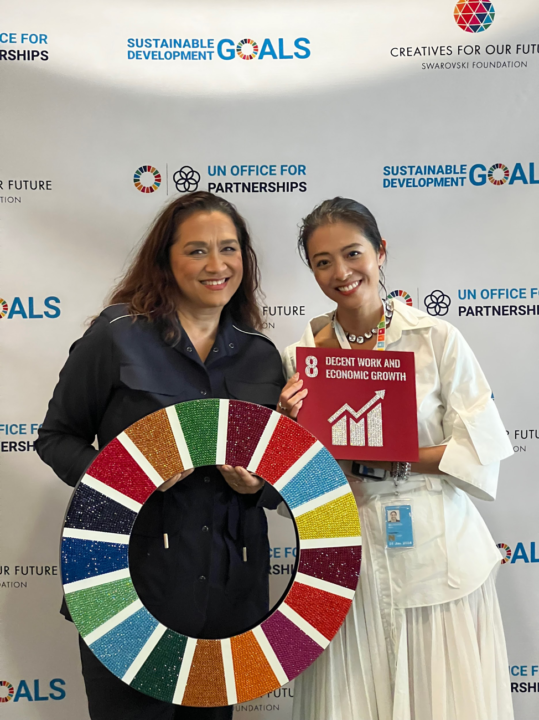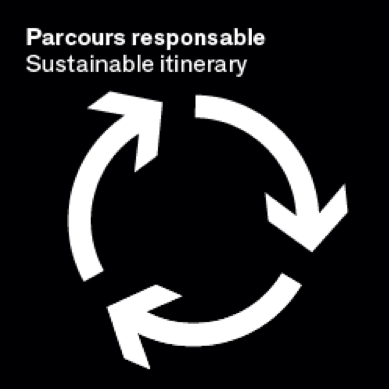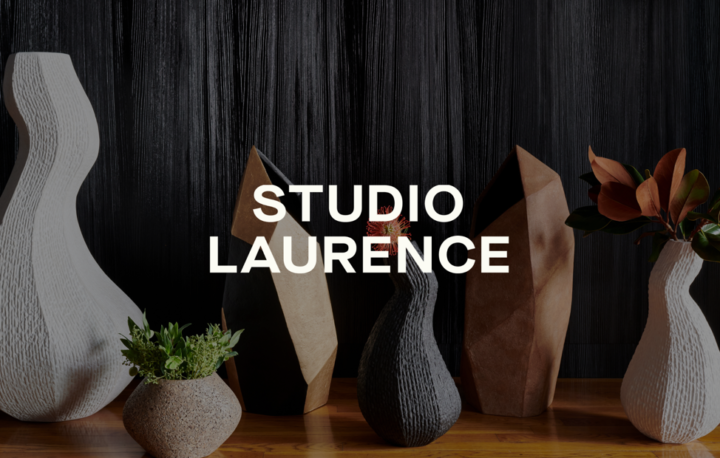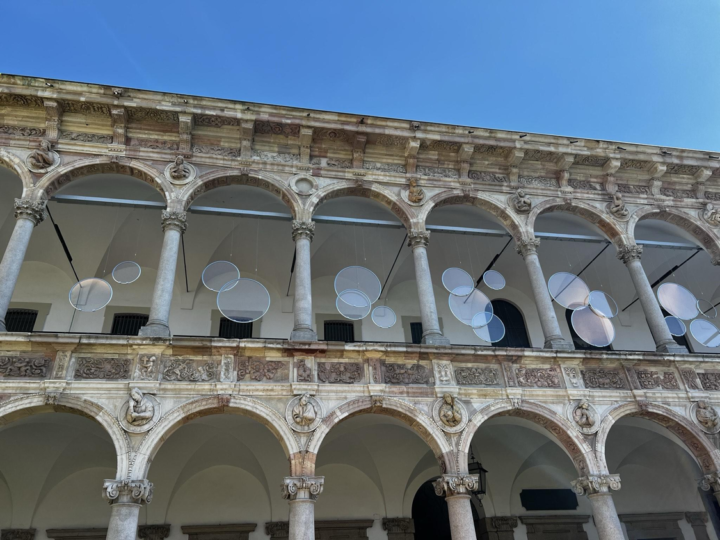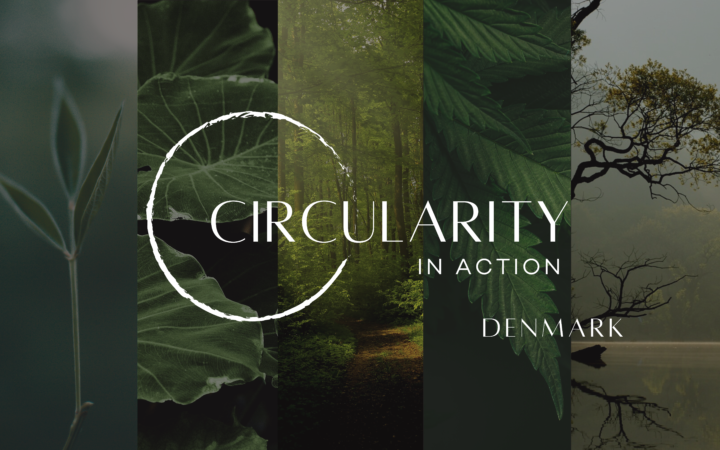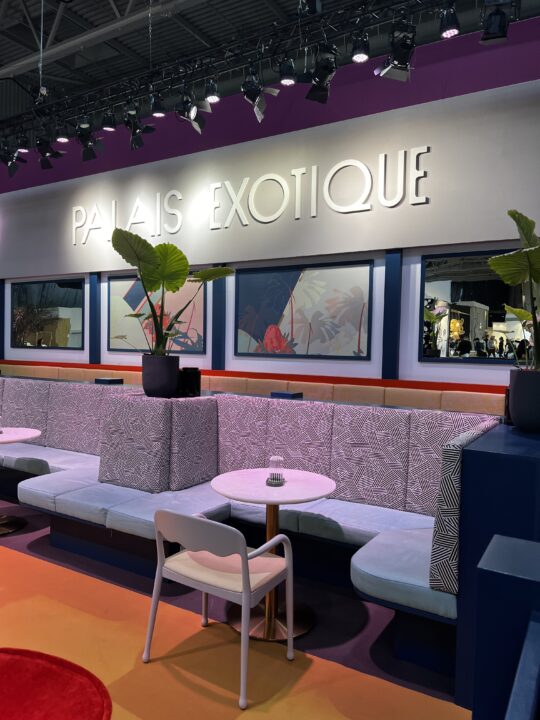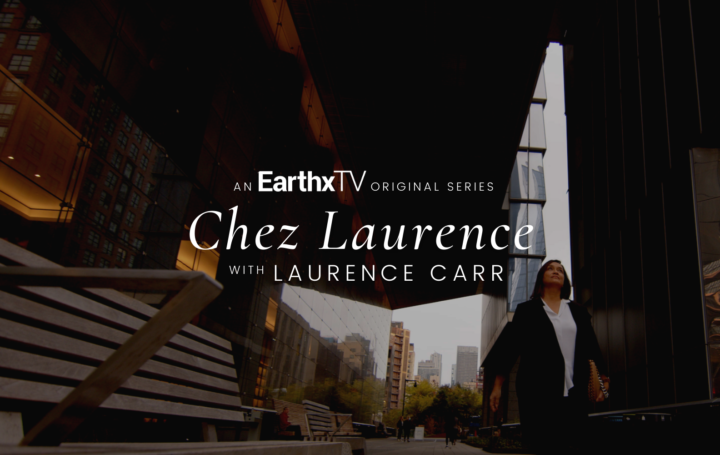
At the world’s largest home furnishings industry trade show in High Point, North Carolina, NYC designer Laurence Carr unveils a vignette showcasing circular design brands, highlights expert insights on sustainability from a trend forecaster, and discusses responsible design with different manufacturers in the design industry.
Let’s dive deeper into the episode. In the season 2 premiere of the EarthxTV Original Series, Chez Laurence, creator, host, and executive producer, Laurence Carr attends High Point Market in Fall 2021. Here, she hosts educational panels with guest speakers discussing sustainability and circularity in design and the responsibilities that all companies in the industry have in regards to the environment. One of these panels was “The Big Shift: Why Circular Design is the Way of the Future,” sharing the expert wisdom of Susan Inglis, Cisco Pinedo, Kathryn Richardson, and Chad Bolick.
For many years, interior designers had to sacrifice aesthetics if they wanted to create a sustainable space, but recently that has changed. “It is simply no longer true that there is a trade-off between sustainability and quality or beauty and elegance,” Carr states. With so many furniture and textile companies now prioritizing sustainability and wellness, it’s easy to design a beautiful space that is also good for the environment.
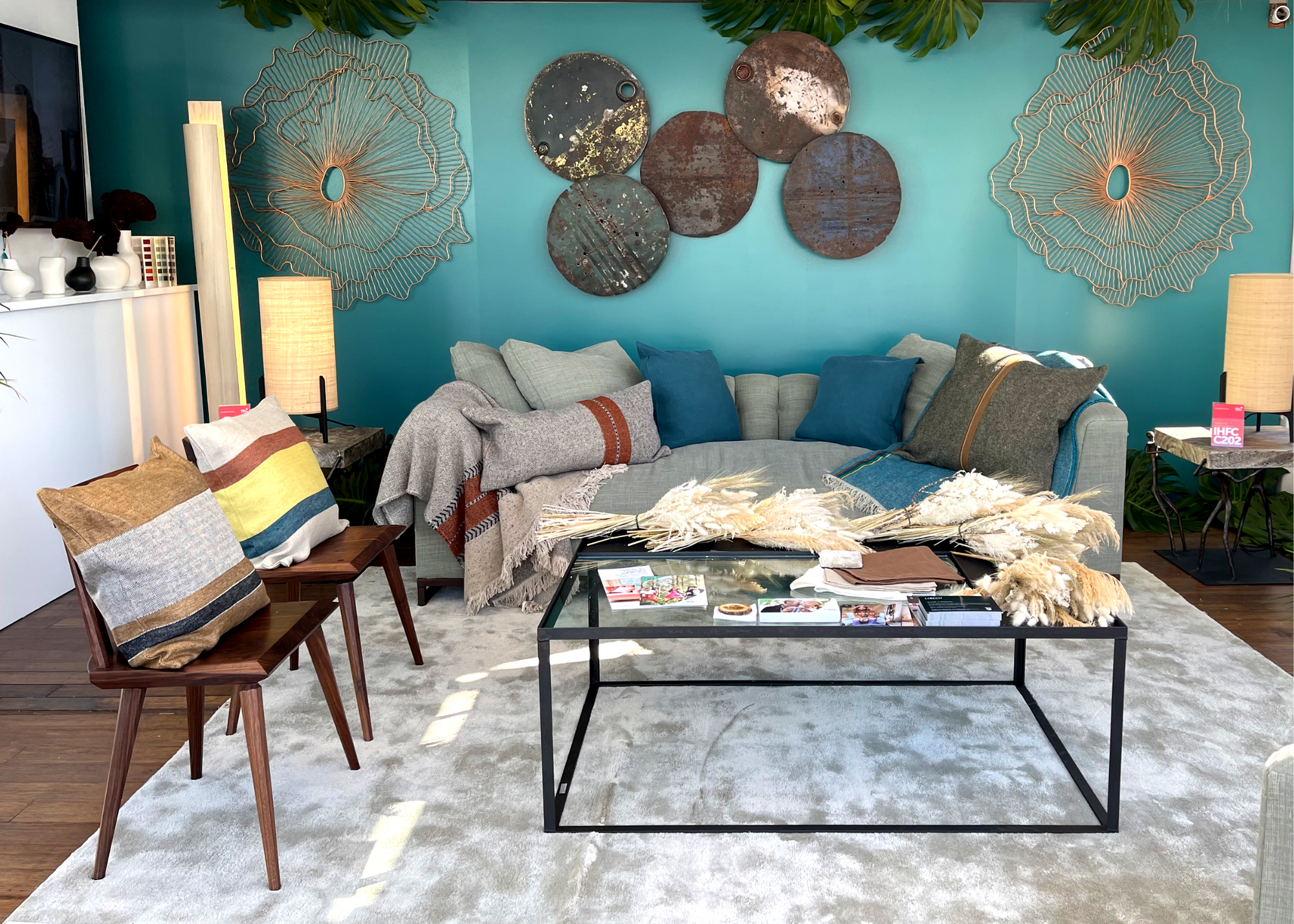
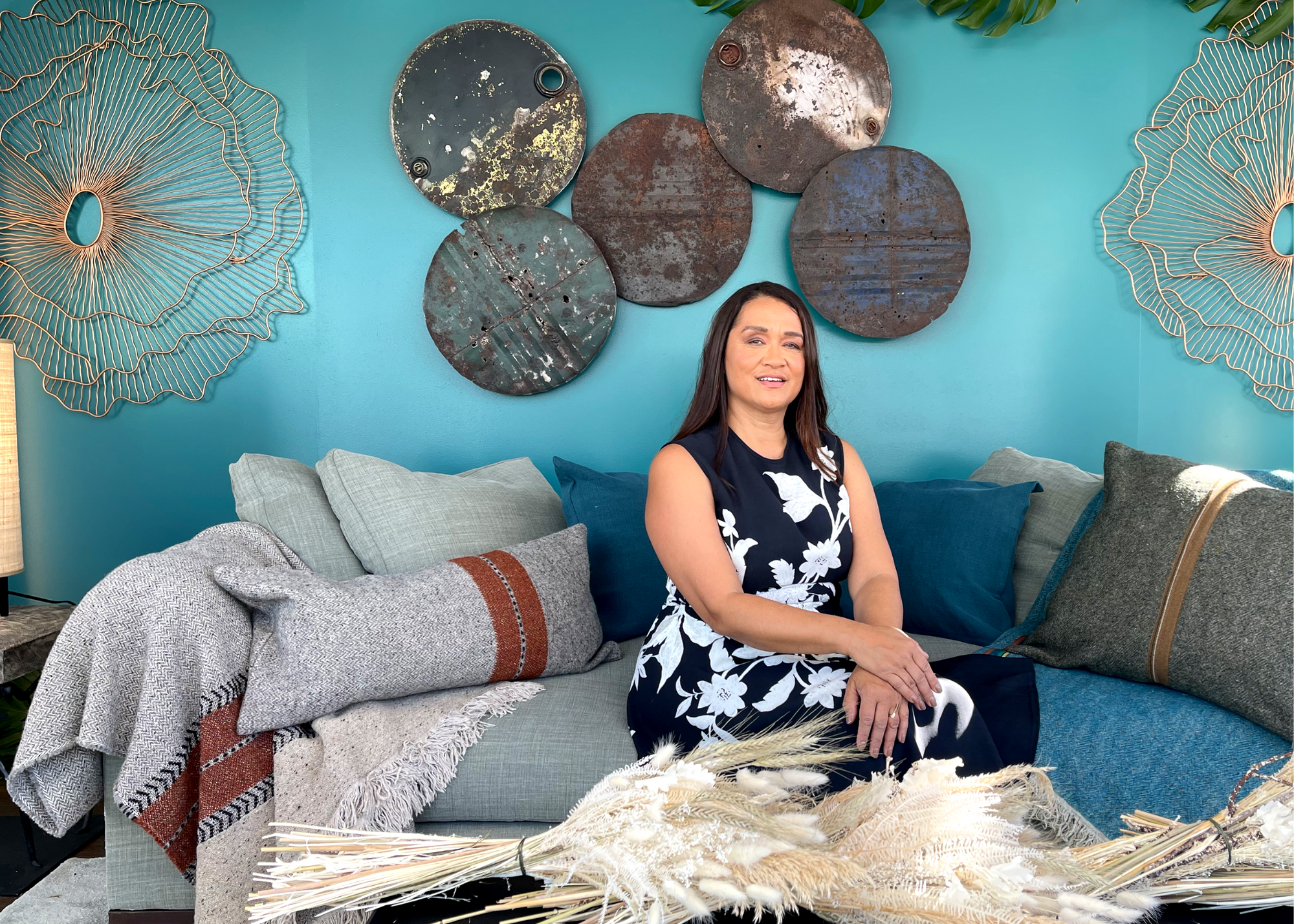
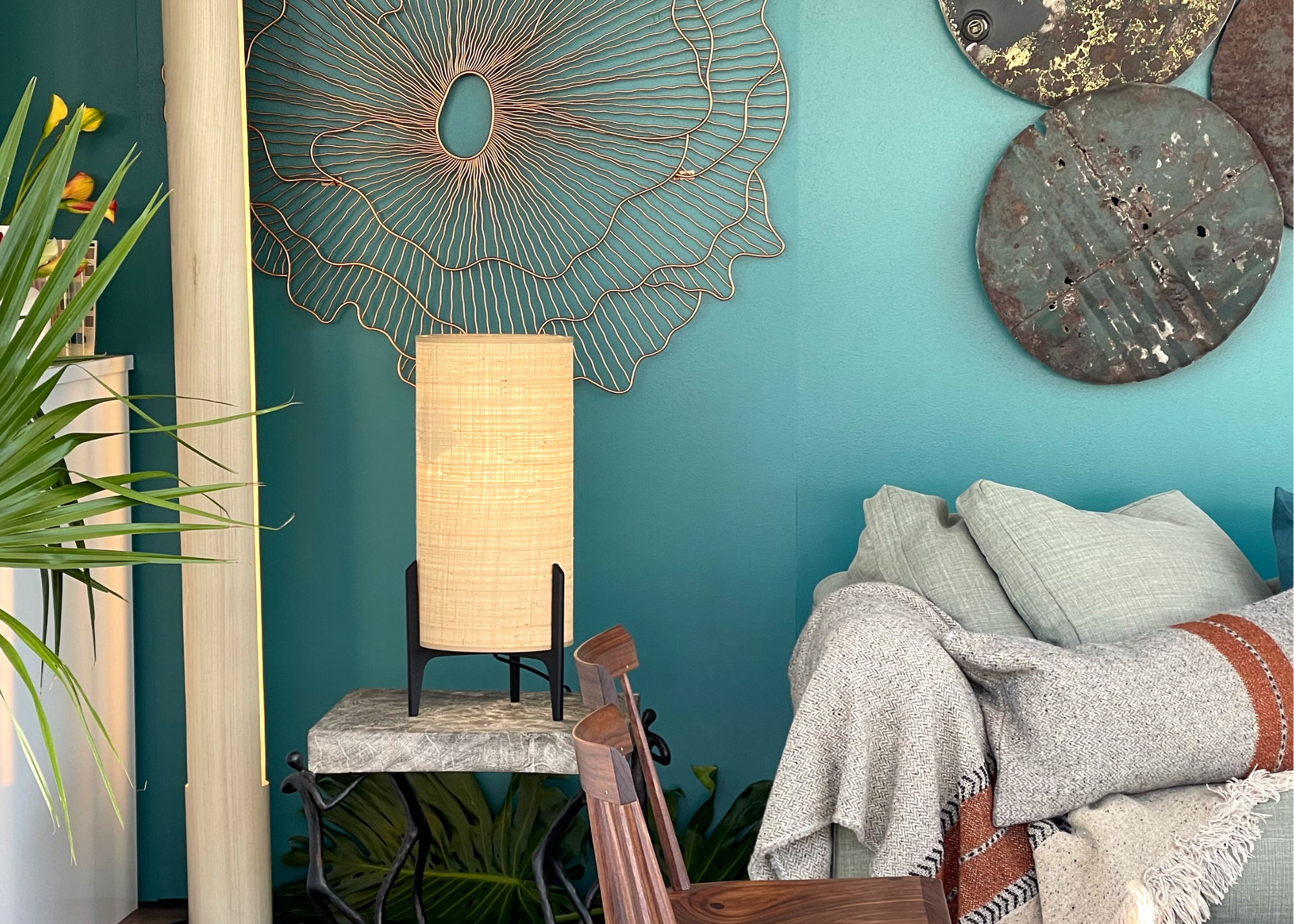
Images: Laurence Carr’s Salon de la Circularité, featured at High Point Market
That was the inspiration behind Laurence Carr’s Salon de la Circularité, part of the “Sustainable Stories” activation, pictured above. Every piece used to create this vignette is circular and sustainable, proving that there is no longer a separation between beauty and sustainability. Partnering with brands such as Phillips Collection, Kymo, and Currey and Co, Carr made the conscious choice to work with companies that are truly committed to sustainability and circularity and have been certified by the Sustainable Furnishings Council for their environmentally-friendly practices.
Click here to learn more about the design behind Salon de la Circularité.
Some home furnishings companies have made a commitment to sustainability since the start, like Cisco Pinedo, founder and owner of Cisco Home. “My first mission for my company on the sustainability side was to plant a tree for every piece of furniture we made,” he says during the panel discussion. Because most of their furniture is made from wood, Pinedo wanted to offset the impact on the environment that his business had.
This type of thinking is related to circular design, which is a philosophy that goes beyond the traditional “take, make, waste” linear model and thinks more about how materials can be reused, recycled, and upcycled into a new product. The design industry as a whole has a significant impact on the environment and is a large contributor to climate change. Through the use of sustainable materials and circular design in the life Cycle Assessment of products, however, companies can strive to become carbon neutral. For a company to be considered carbon neutral, they have to balance the emissions of carbon dioxide that their business produces with the removal of an equivalent amount of emissions from the environment.
Libeco is one such example. The Belgian linen company has been around for over 160 years, and in that time, they’ve made great strides to be sustainable. “We are completely carbon neutral. We feel it’s an innate part of our DNA; it’s something that’s extremely important for the future of the planet and for our organization’s health, but also it’s financially smart to do so,” states Kathryn Richardson, Vice President of Libeco. Sustainability is often thought of as a luxury, but it’s becoming a necessity if we want to protect our planet. There is a finite amount of natural resources on Earth, and we need to take care to use them responsibly for the sake of future generations.
However, there is a growing segment of the population that is interested in sustainable materials and furniture. As Luciana Mikos, co-director of Mill Collective says, “Thankfully, wellness is becoming increasingly more important for people. So they’re looking for healthy interiors.” Health and wellness is another aspect of sustainable design that is often overlooked, but extremely important for the consumer and the environment. As the general public becomes more aware of the issues surrounding the manufacturing of traditional materials, there is an increased demand for healthy, sustainable products.

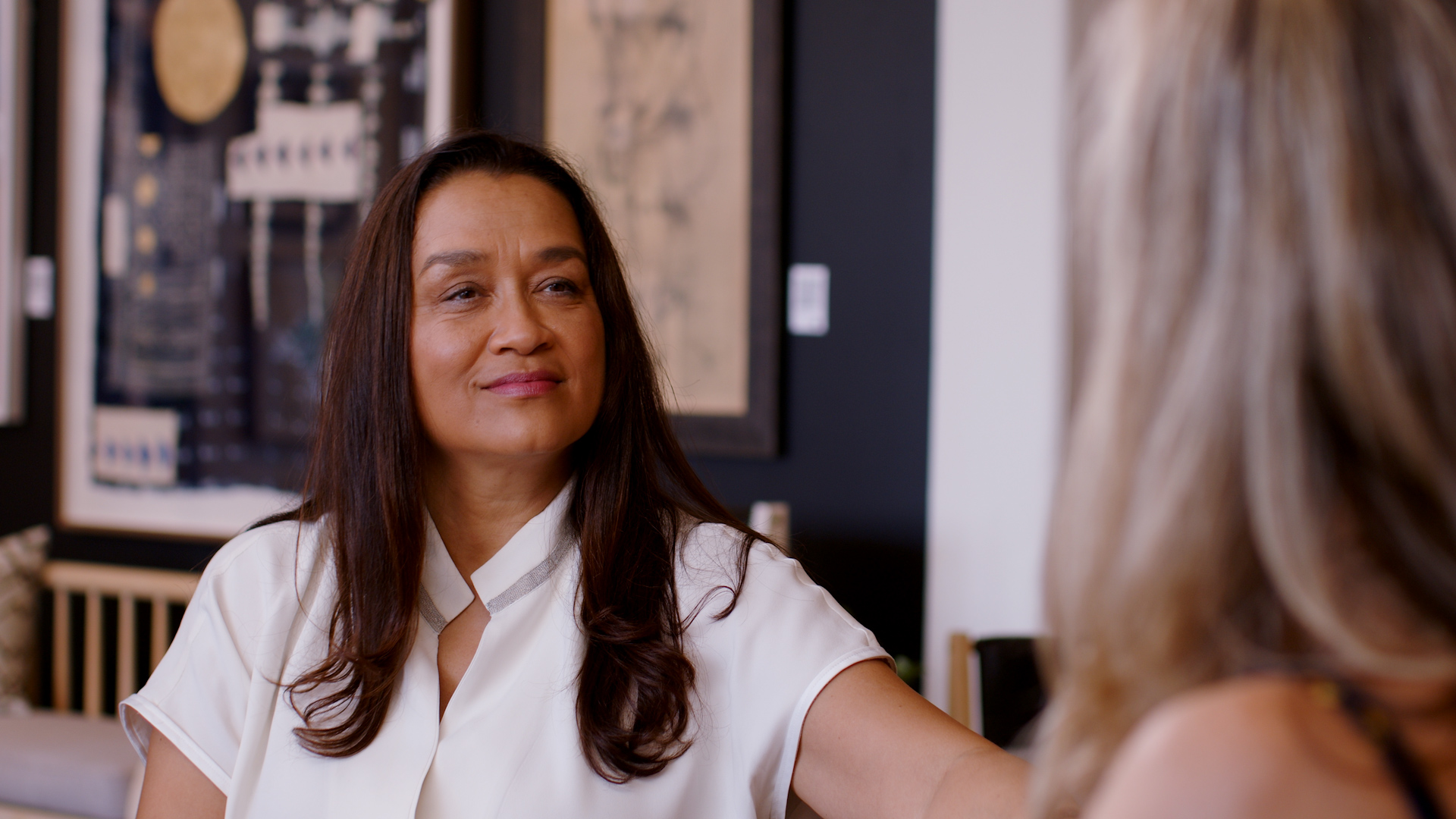
Images: Laurence Carr interviewing Luciana Mikos / Mill Collective
One of the main benefits of using sustainable materials in home furnishings is that they contribute to a healthier indoor environment. Traditional materials are typically treated with chemicals and preservatives to make them last longer, but they can negatively impact our health. VOCs, or volatile organic compounds, are probably the most common chemicals used in furniture and textiles. What makes these substances so dangerous is that the vapors are released into our homes and into the air we breathe. Sustainability in interior design is more than just protecting the environment; it’s about protecting ourselves and our families, as well.
International Market Center (IMC) is one of the industry leaders in the sustainability and wellness movement. “It’s about conversation on the health attributes of sustainable furniture,” says Julie Smith Vincenti, trend consultant at Nine Muses Media. “As an industry, we just need to be better storytellers.” She refers to thinking about the dining table where you will eat a meal with a family or the rug that your children are playing on. Where were those products made? How were they treated during manufacturing? These are the types of questions you should ask yourself before purchasing a product that you place in your home.
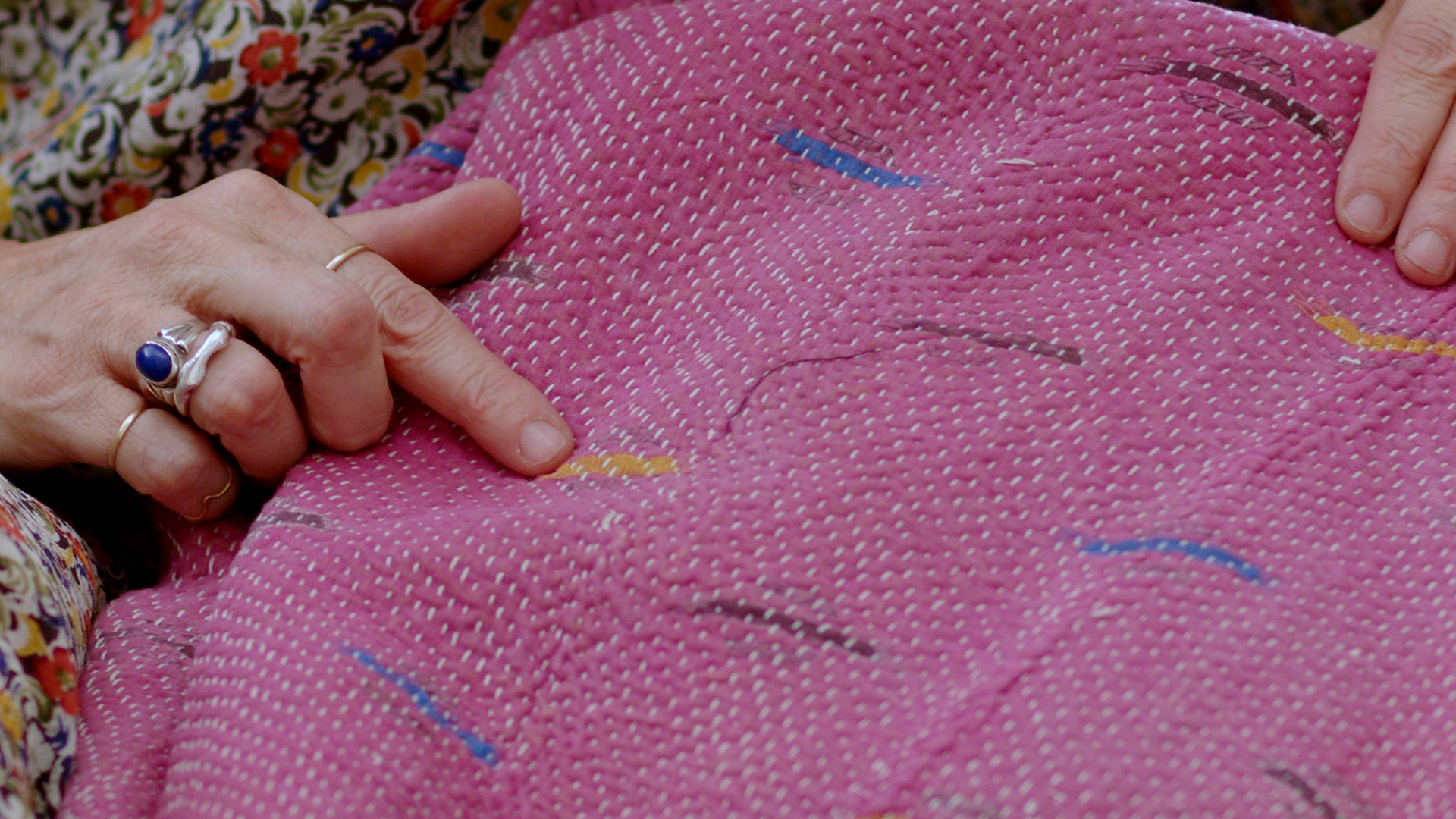
Image: Aloka Home saris demonstrated by Amy Flurry
Another way to be sustainable is to look for companies that sell upcycled products, such as Aloka Home. “It used to be if you bought pre-owned, you were trying to get a value. Now, it’s a point of pride,” says Amy Flurry, advisor at Aloka Home and director of Recipe for Press. Aloka Home specializes in creating pillows and blankets made from previously owned saris. The saris they use for their products are typically 60 – 80 years old and then they are given a second life as a pillow or a blanket. The beautiful, unique designs of their products further demonstrate how sustainability doesn’t necessarily mean plain or boring.
Sustainable materials might also come in some unexpected forms. “Leather is the original sustainable solution,” claims Moore & Giles president, Sackett Wood. Leather is abundant, due to the massive global beef industry, and it needs to be kept out of landfills. Like other sustainable materials, high-quality leather lasts a lifetime and it doesn’t need to be treated with chemicals in order to last. It’s easy to think of leather as wasteful since it comes from a living animal, but in reality, the opposite is true. The global demand for beef is higher than ever and it’s only expected to grow. Since millions of cows are raised every year for agricultural purposes, that means there’s tons of leather that needs to be used.
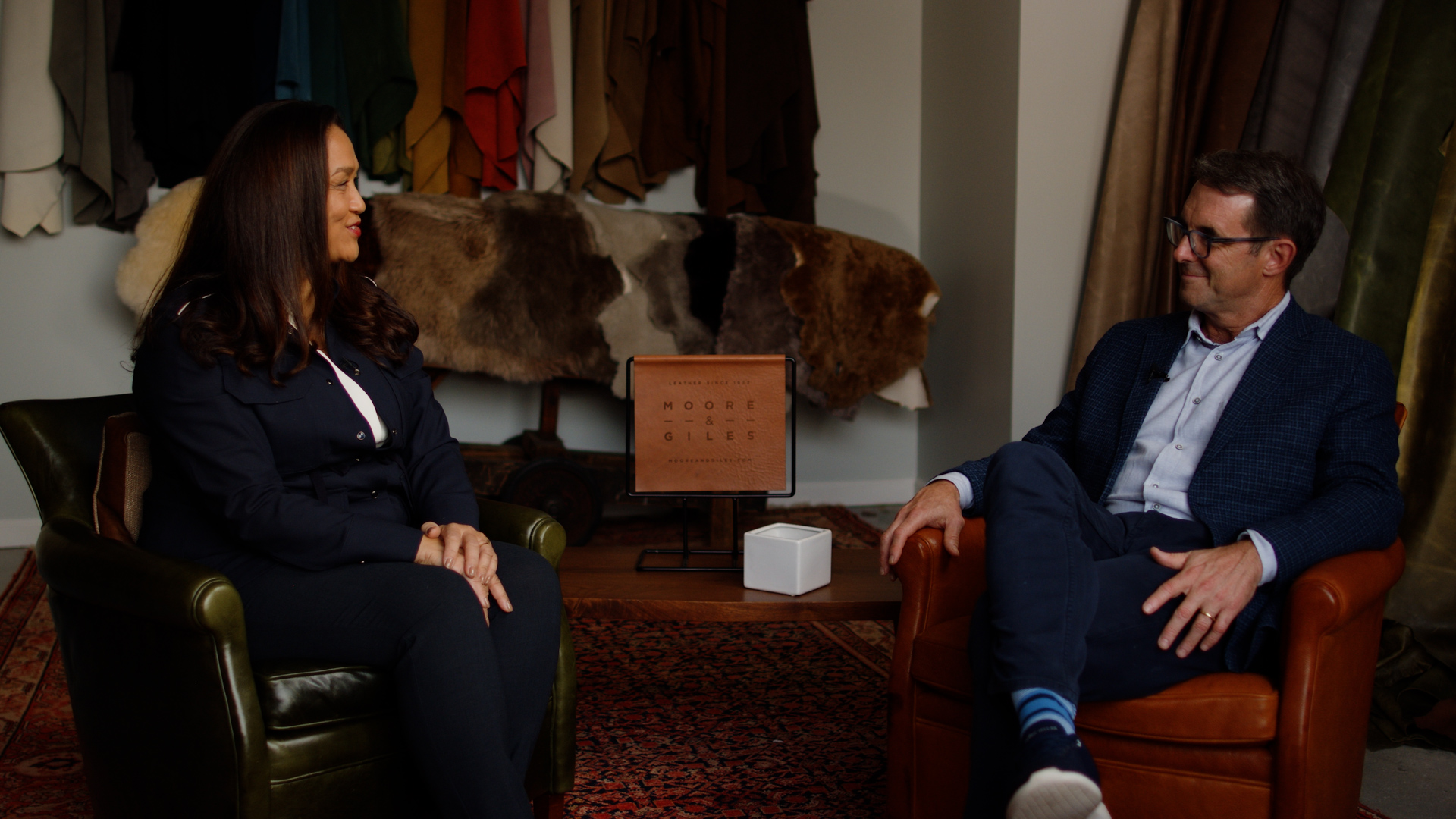
Throughout this episode, Laurence Carr explores how different companies in the interior design and home furnishings industries are doing their part to protect the planet and combat climate change. As we begin to experience more adverse climate conditions, these sustainable practices will soon become the norm. Some companies, such as Cisco Home and Libeco, offset the impact their businesses have on the environment. Others, like Mill Collective and IMC, focus more on the healthy and wellness aspect of sustainability. Another approach is to use materials that are already available, like Aloka Home with pre-owned saris and Moore & Giles with leather from the beef industry. Sustainability and circular design practices can be achieved through many different methods in the making of products, it’s only up to us to discover what they are and implement them.

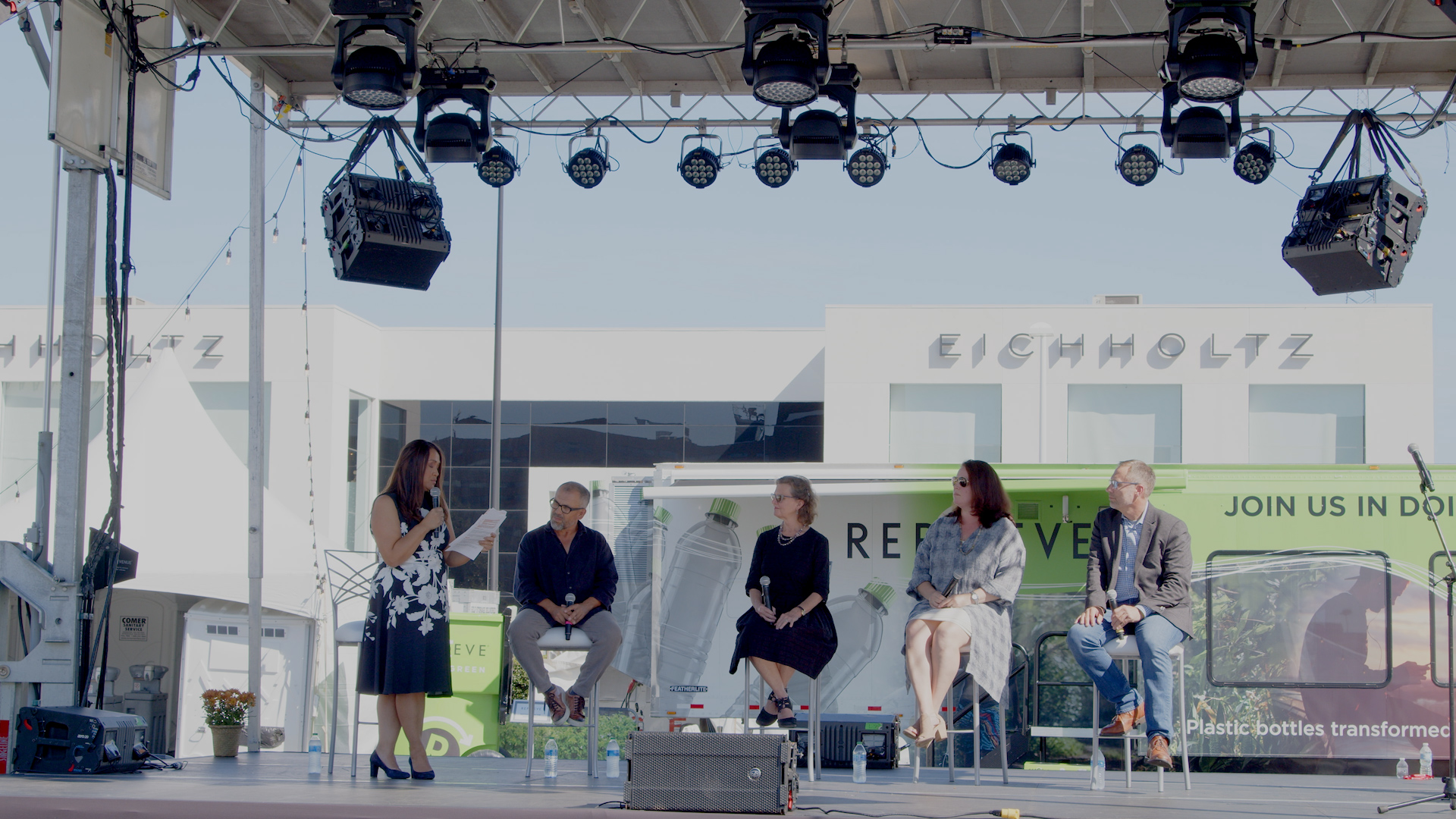
Image: Laurence hosting a panel “Circularity, the Next Frontier” at High Point Market
FEATURING EPISODE GUESTS:
Julie Smith Vincenti / IMC
Amy Flurry / Aloka Home
Luciana Mikos / Mill Collective
Sackett Wood / Moore & Giles
Cisco Pinedo / Cisco Home
Susan Inglis / Sustainable Furnishings Council
Kathryn Richardson / Libeco
